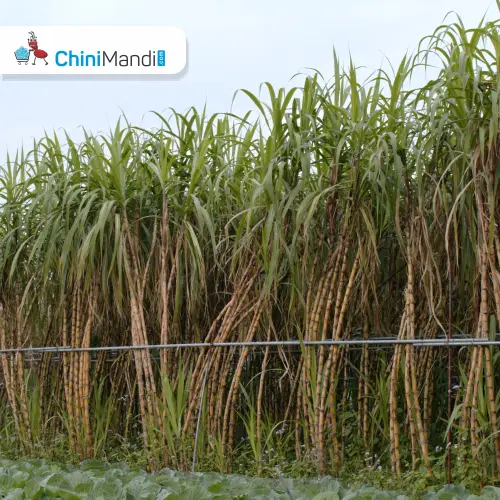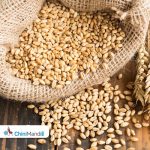State’s Additional Chief Secretary, Sugar Industry and Sugarcane Development Department, Mr. Sanjay R. Bhoosreddy, while issuing a detailed advisory regarding spring cane planting, told the farmers that there are five components under the Panchamrit scheme of the department i.e. trench method planting, intercropping with sugarcane, ratoon management, irrigation by drip method and trash mulching. Farmers can increase their production by adopting these component, where 60-70 percent germination can be obtained by sowing cane by trench method in spring, the same can get additional income by intercropping by moong and urad . Soil fertility is also increased by absorption of atmospheric nitrogen in the soil by these pulses crops. By drip irrigation method where we can save irrigation water by supplying the necessary irrigation water near the roots of sugarcane and increase the yield, whereas, under the ratoon management technique, the same yield can be achieved in 20-25 percent less cost by adoption of ratoon management device. By trash mulching, we can conserve soil moisture, increase organic matter in the soil as well as control of weeds.
He asked the farmers to start sowing sugarcane in spring from February 15, keeping in view the temperature, they must complete the work of spring planting sugarcane by April 30. The women self-help groups formed by the Sugarcane Development Department were suggested to start preparing more and more plants of new sugarcane varieties by single bud method so that after 25-30 days those plants could be distributed among the farmers.
Mr. Bhoosreddy said that farmers should sow only sugarcane varieties which approved for Uttar Pradesh by the ‘Seed Sugarcane and Sugarcane Varieties Approved Sub-Committee ‘. Approved varieties has the ability to fight against pests and diseases and increase the yield. New Sugarcane varieties are CoS 13235, Co. 15023, Co.Lk 14201, Co.S.17231, Co.S 14233, Co.S.16233, Co.S.15233, Co.Lk.14204,15207 (For Central and Western UP) Co.Lk.15466 (East U.P.) U.P.14234 (for Alkaline soil ) etc. Use of excess nitrogen in Varieties Co. S. 13235 and Co 15023 is harmful, so use only recommended quantity and complete both the top dressing before monsoon. Do not apply nitrogen after monsoon. He expected the farmers do not sow those varieties which are not approved in the state or running on trial under the research centers of the state.
Emphasizing the use of fertilizers in balanced form in spring sugarcane sowing, he said that fertilizers should be used only on the basis of soil test. Otherwise, use 180 kg.Nitrogen, 80 kg.Phosphorus, 60 kg Potash and 25 kg Zinc Sulphate per hectare. Divide the amount of nitrogen in to 03 parts and use it at 03 different stage. To supply these elements in the field apply 130 kg Urea, 500 kg. Single Super Phosphate, 100 Kg. Muriate of Potash and 25 kg Zinc Sulphate in the cane field at the time of planting. Give remaining 260 kg quantity of urea as top dressing after germination and before monsoon. Use of Nano urea for increases the efficiency of fertilizers. He told that on supplementing phosphorus in sugarcane with single super phosphate, 11 percent additional sulfur is supplied, due to which the yield and sugar percentage increase. For the supply of organic matter in the soil, at the rate of 100 qtl. FYM or 50 qtl. Pressmed or 25 qtl. Vermi compost with 10 kg Azotobacter and 10 kg P.S.B. must be used at the time of field preparation at the rate of per hectare. The use of organic matter increases the water-holding capacity of the soil and the number of micro-organisms in the soil, which increases the fertility and productivity of the soil. For pest control, apply Fipronil 0.3 gm at the rate of 20 kg per hectare on the top of the setts before covering.
He also said that since red rot is a seed-borne disease of sugarcane that means the primary infection of this disease occurs through seed cane, so farmers must treat the seed cane before sowing. For seed treatment, mix 112 grams of the chemical in 112 liters of water at the rate of 0.1 percent Carbendazim or Thiophenate methyl and treat them for 10 minutes. For complete protection from this disease, sow seeds from disease-free pure healthy departmental nurseries, nurseries of registered sugarcane seed producers or from your own healthy field. Do not sow sugarcane at least one year in the field infected with red rot disease and adopt crop rotation by sowing other crops in place of sugarcane because the pathogen of red rot disease remains active for 06 months even without a host plant i.e. sugarcane. Avoid ratooning in sugarcane infected field. 05 kg of bio insecticide fungus Metarhizium anisopli and Bavaria bassiana protect the crop against underground pests such as termites, white grub and root borer.
Sri Bhoosreddy also said that at the time of field preparation in last plowing, if 10 kg Trichoderma (Ankush) is mixed with 2-3 qtl.F.Y.M at the rate of per hectare and apply in the field, then the pathogen of red rot disease ‘Colletotrichum falcatum’ will not get infected in the soil due to which the possibility of spread of red rot disease will be decreases. He told that Trichoderma is a bio-product which protects sugarcane crop from red rot as well as soil borne diseases like wilt and pine apple. Trichoderma check the growth of these fungus by Parasitizing on them.















